Translate this page into:
Inception and evolution of Robbins Pathology: A personal perspective
Lowell T. Coggeshall Distinguished Service Professor of Pathology, Biologic Sciences Division and The Pritzker School of Medicine, University of Chicago, Chicago IL 60637, USA; vkumar@bsd.uchicago.edu
[To cite: Kumar V. Inception and evolution of Robbins Pathology: A personal perspective. Natl Med J India 2023;36:49–52. DOI: 10.25259/NMJI_154_23]
Robbins is the most widely used pathology text in the world. Along with Harrison’s Medicine, Guyton’s Physiology, and Goodman and Gilman’s Pharmacology, Robbins’ texts stand out as one of the pre-eminent medical texts that have made an impact on how medicine is taught. In this essay I wish to present a personal perspective on Robbins and his books gleaned from my association with him since 1972.
Who was Robbins and why did his books become the ‘syllabus’ of pathology? Stanley Robbins was born in 1915 in the state of Maine in USA. He lost both parents at a young age and was brought up in Boston by his grandmother. He was educated at Massachusetts Institute of Technology (MIT) and Tufts University Medical School, graduating at the top of his class. After completing medical school, he joined as a pathology resident at Boston University and eventually as a junior faculty member in 1944. His responsibilities included signing out histopathology slides and teaching medical students. As a teacher, he was dissatisfied with the pathology texts available to medical students at that time. In his view they placed too much emphasis on descriptive morphology, such as would be useful for professional pathologists rather than students. He believed that pathology formed the foundation of sound clinical medicine and hence for students of medicine, pathogenesis, pathophysiology and clinicopathological correlations are as important as morphology. With this conviction, Robbins wrote Textbook of Pathology with Clinical Application, which was published in 1957. It had 32 chapters, 933 illustrations and 1350 pages (Fig. 1). There were no coauthors, a remarkable achievement. Reviews of the book by senior pathologists were strongly negative since there was ‘not enough descriptive morphology and too heavily clinical’. But a Temple university medical student wrote to the publishers: ‘I have begun reading my new Robbins textbook. I know someone up there loves me.’ The students also appreciated the conversational style and jokes scattered throughout the book. As an example, in the section on pigmentation, he wrote: ‘Tattooing may cause dermal pigmentation of an innocuous but sometime embarrassing nature. The Tattoo pigment has the distressing property of persisting in situ throughout life in dermal macrophages creating difficulties if one wishes to marry Alice when the adornment is seductively titled Mary.’ Both because of content and style, Robbins Pathology became an immediate hit with students and hence in 1957 started the love affair between students of medicine and Robbins that has endured more than 60 years and shows no sign of abatement.
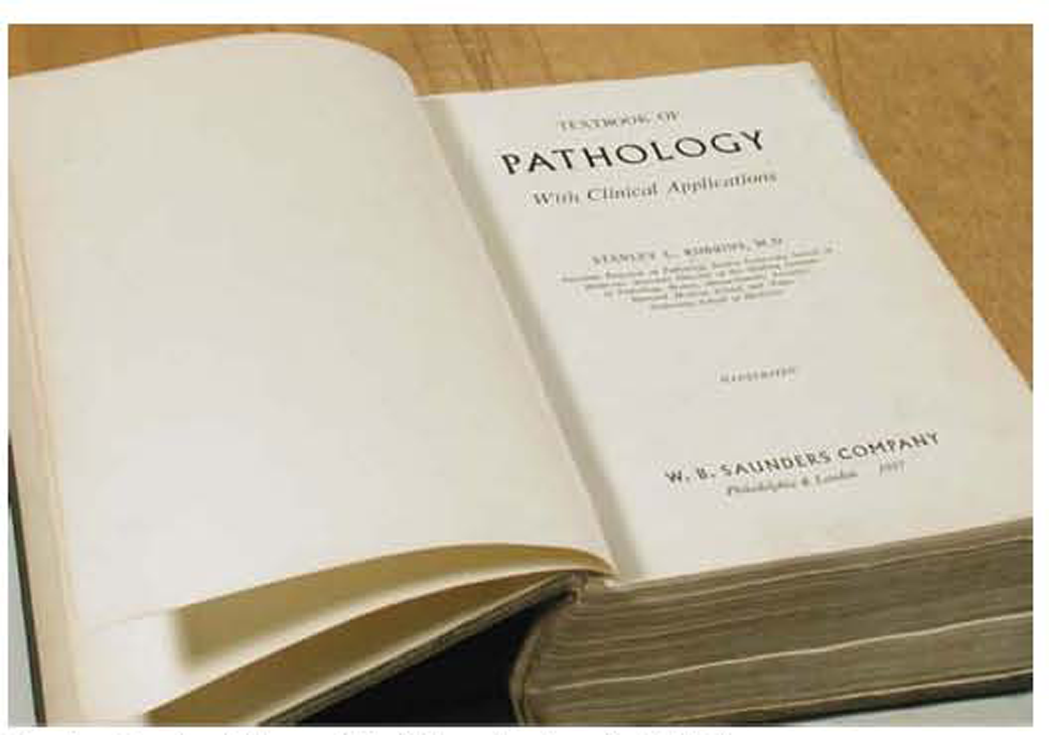
- First edition of Robbins textbook (1957)
Robbins (Fig. 2) revised the book every 5 years, so the third edition was published in 1967. Each edition was updated, and, in some cases, entirely new chapters were added. For example, a chapter on genetic diseases was added in the third edition (1967). This is but one example of his far-sightedness in anticipating the role of genetic factors in human disease.
Despite its enormous worldwide success Robbins did something that no successful author does and that is to rewrite the book from scratch. He felt that with advances in basic sciences the book needed to focus even more on disease mechanisms. Thus, the first edition of this newly written book Pathologic Basis of Disease was published in 1974 (Fig. 3); the current tenth edition may thus be considered the thirteenth edition of Robbins.
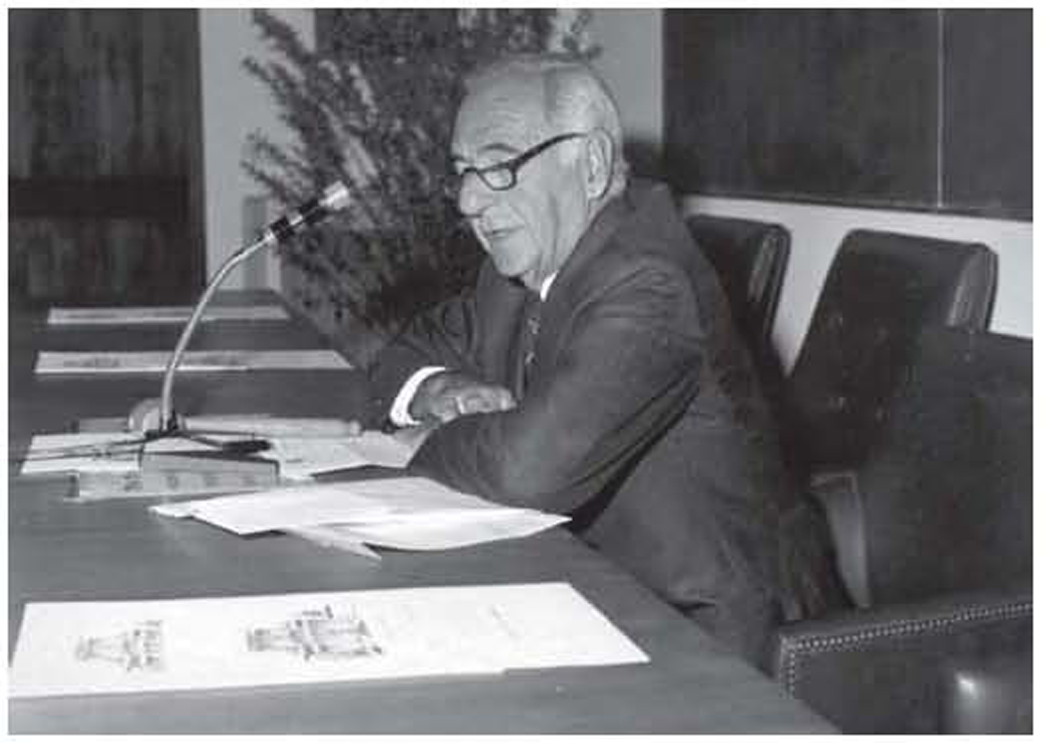
- Dr Stanley Robbins
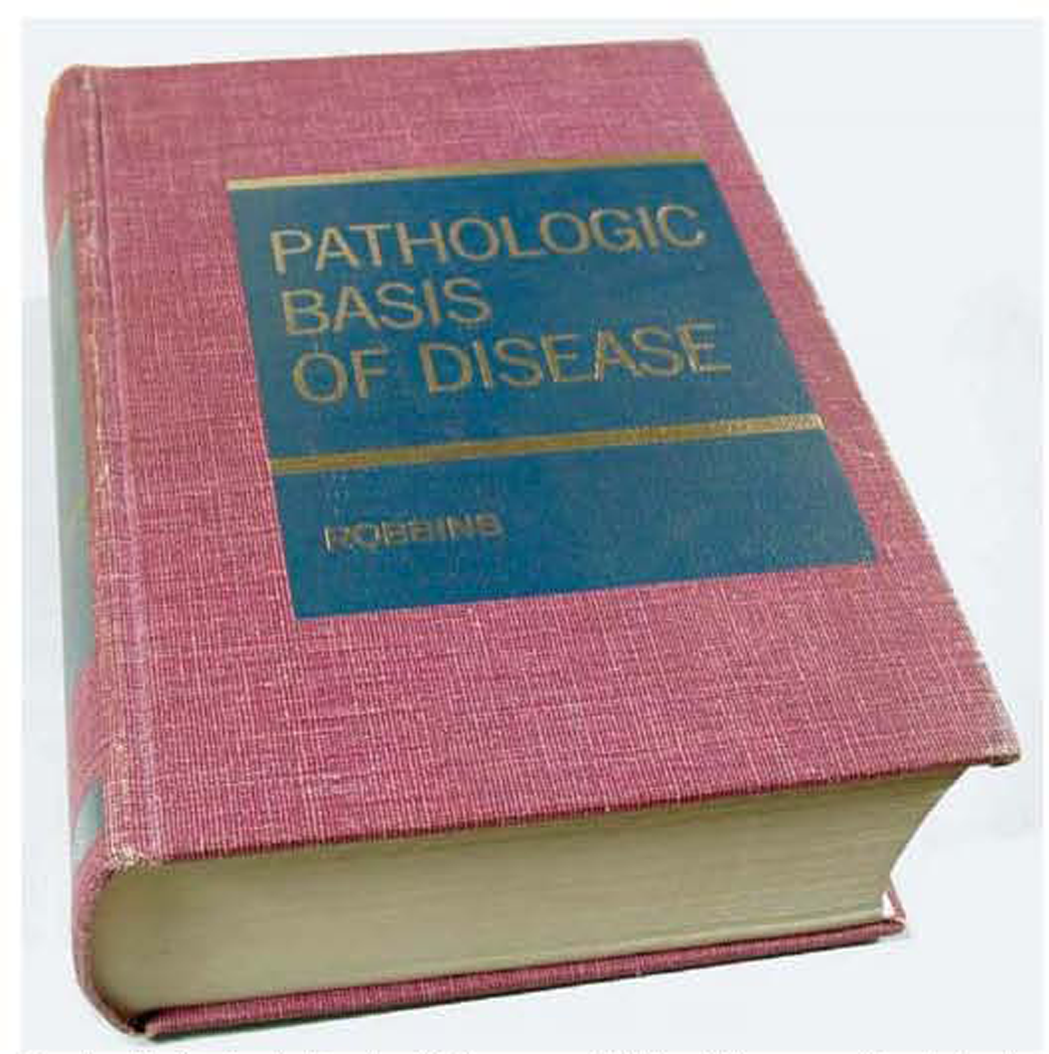
-
Pathologic Basis of Disease, rebirth of the now classic text (1974)
When time came to revise the first edition of Pathologic Basis of Disease, Robbins took another bold step. He recruited a coauthor, Dr Ramzi Cotran. Who was Ramzi Cotran? Dr Cotran was born in 1932 in Haifa, Palestine (Fig. 4); he obtained his medical degree from American University of Beirut in Lebanon and did his residency at Boston University (1956–1959), joining later as a junior pathologist in 1960. In 1974 he became the chairman of the department of pathology at the prestigious Brigham hospital—the flagship of Harvard medical school. He specialized in renal pathology and did ground-breaking research in nephropathology. He demonstrated that pyelonephritis in most cases was due an ascending infection (1963), that the glomerular permeability was affected by the charge on the basement membrane (1975), and with Judah Folkman demonstrated that tumour angiogenesis was required for tumour growth (1972). Robbins felt that to cover disease mechanisms in depth he needed a coauthor who was also an experimental pathologist. Therefore, Dr Cotran was the perfect choice. He became a coauthor in the second edition of Pathologic Basis of Disease (1979; Fig. 5). He expanded coverage of topics such as free radical injury (3 pages) and chemical mediators of inflammation (5 pages). The importance of these in human disease is well established now, documenting the foresight of the authors.
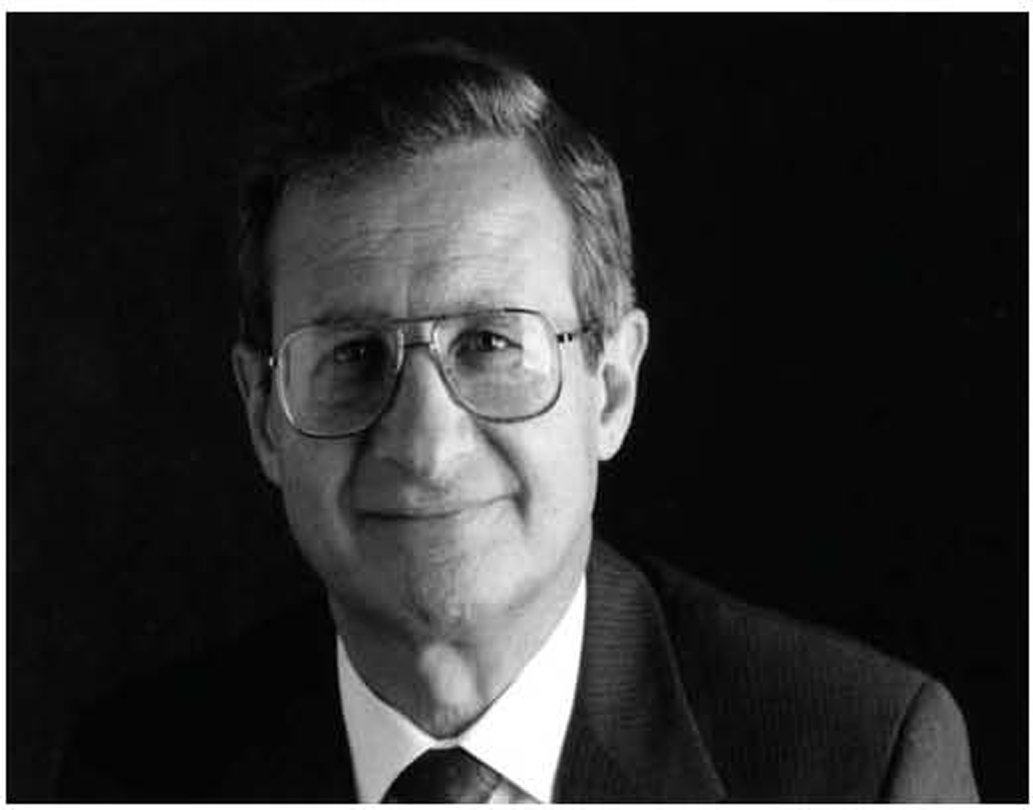
- Dr Ramzi Cotran
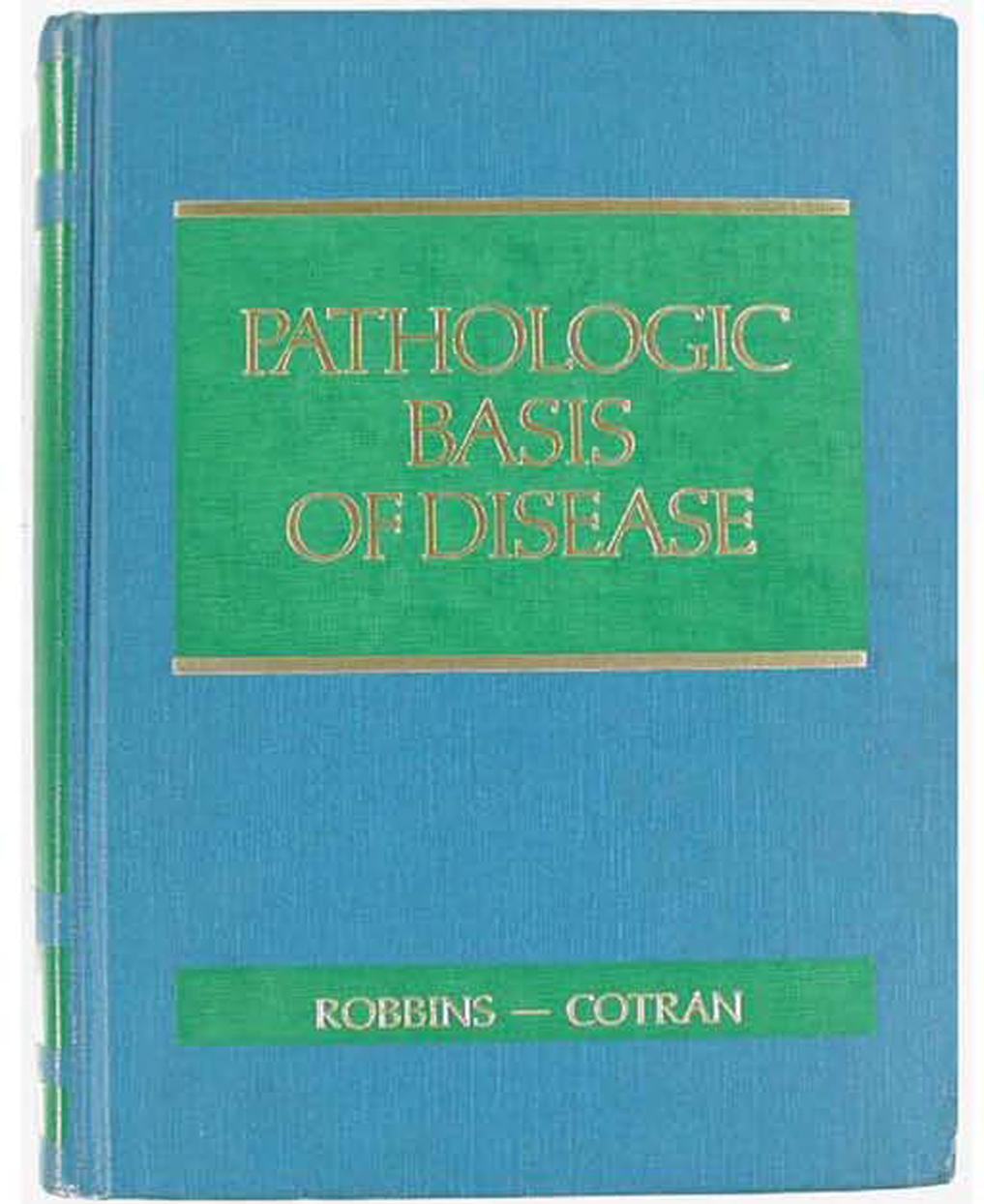
- Dr Ramzi Cotran joins the second edition of the Pathologic Basis of Disease (1979)
I joined the All India Institute of Medical Sciences (AIIMS) in 1969 after completing MBBS at Medical College, Amritsar. For my MD, I was fortunate to work under Dr Ramalingaswami. At his recommendation, Dr Robbins offered me a junior faculty position in his department in 1972. I had gone to the USA because of my interest in basic research and teaching. Fortunately, in 1974, while studying the genetic control of virus- induced leukaemia in mice my laboratory discovered natural killer (NK) cells—the first line of defence against cancers and virus infections. The paper published in the prestigious Journal of Experimental Medicine earned wide recognition. After the publication of my first paper in 1974, I published a series of three papers in the Journal of Experimental Medicine over the next few years and procured my first National Institutes of Health (NIH) grant in 1976 aimed at further characterization of NK cells. My laboratory now had an MD–PhD student (John Lust, now Professor of Oncology, Mayo Clinic) and research technologists (Fig. 6). I could not have been happier. The life as they say was ‘beautiful’.
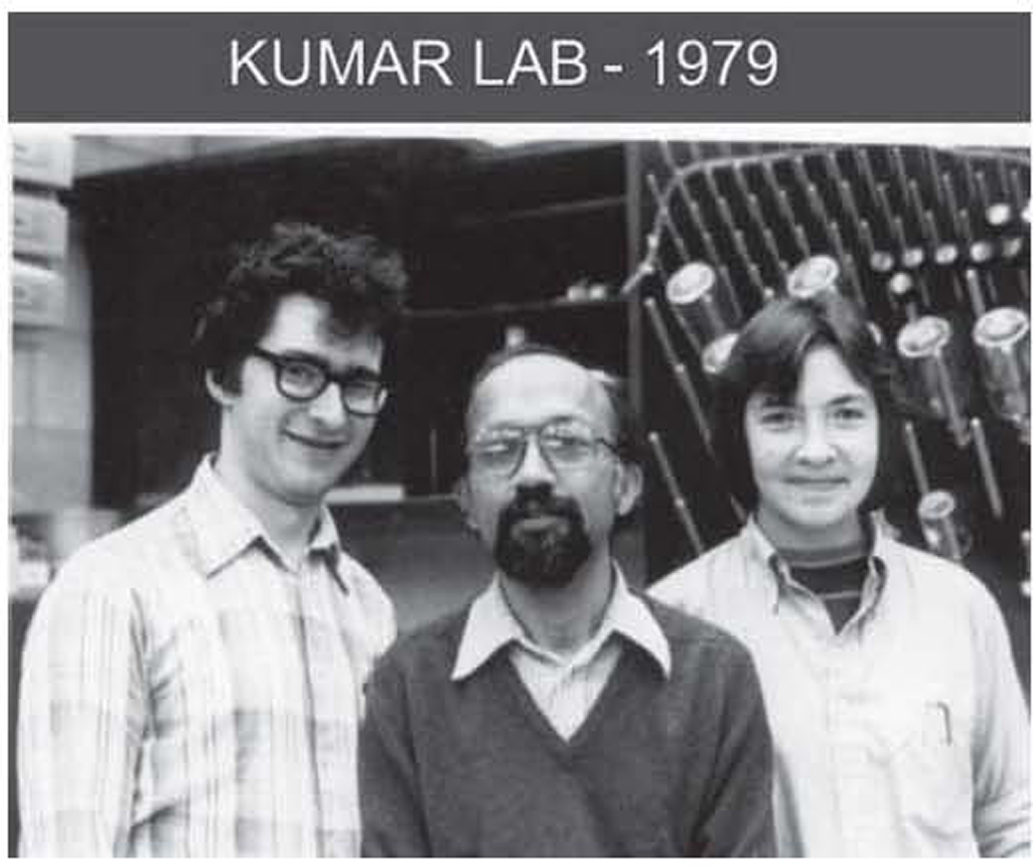
- Vinay Kumar (centre) flanked by John Lust, MD–PhD student (left) and Mary Carol Barnes, laboratory assistant (right)
In my first month at Boston, Dr Robbins asked me to give a lecture on fungal diseases (a topic no one wanted to touch!).
Roughly one half of the class was present in the lecture hall. Later that afternoon, Dr Robbins told me that many students had told him that my lecture was excellent and that those who did not attend had requested that I record the lecture and give it to the students. Because of my success, my teaching responsibilities increased considerably.
One day in 1979, Dr Robbins called me to his office and asked me if I would be willing to be a coauthor of Basic Pathology (‘Baby Robbins’). I was shocked because, I was very junior and not trained in the USA and I was busy with research. After some thought and encouragement by colleagues I accepted the offer. Basic Pathology was much shorter than Pathologic Basis of Disease and was written for students who found it hard to cover the bigger book. It was not a summary of the big Robbins but a simpler book in which uncommon diseases were described briefly, and rare diseases were not covered at all. Thus, in 1979, began my association with Robbins’s pathology texts. Soon thereafter, in 1981, Drs Robbins and Cotran asked me to join them as coauthor of the third edition of Pathologic Basis of Disease. I think that my expertise in genetics and immunology both of which are important in pathogenesis of diseases, and my ability to teach influenced Dr Robbins to offer me coauthorship of his books.
Working with Robbins and Cotran taught me many life lessons. Two examples will suffice. After I had agreed to be coauthor of Basic Pathology, Robbins asked me to pick 11 (out of 22) chapters that I wanted to revise. In those days we did not have contributors, we were authors not editors. Diseases of the male genital system was one of the chapters that I picked (because it was very short!). It was customary to exchange drafts, so I gave Robbins the first draft, which I had revised extensively. A few days later, I got the chapter back with extensive comments like ‘not clear’; ‘too brief’; ‘too long’ and some sections were rewritten. A few days later I gave him the second draft, which also came back with extensive comments. I gave him a third draft, thinking it would be final, but it came back with more comments with a note at the bottom of the page that read: ‘Vinay, there is no good writing, only good rewriting.’ This sentence exemplified Robbins’ pursuit of perfection. A lesson that we still follow and make publishers mad because we keep making changes in near final PDF files.
From the time I was a medical student I found the structure of the glomerulus very confusing and always remained on the look out for a clear illustration. My quest led me to a sketch that showed a 3-dimensional structure of the glomerulus. I got the figure redrawn by our computer artist and sent it to Dr Cotran since he was the author of the kidney chapter. To my surprise, Dr Cotran returned it to me with the note ‘Vinay this is terrible’ (Fig. 7). When I asked him why it was ‘terrible’, he replied that it did not resemble the electron microscopic image of the glomerulus. I stood my ground so ultimately, he agreed ‘Since you really want it, I will put this in the chapter’. Six months after the revised edition was published, he called me back and said we should use it in future editions of both the books because the students and residents really like it.
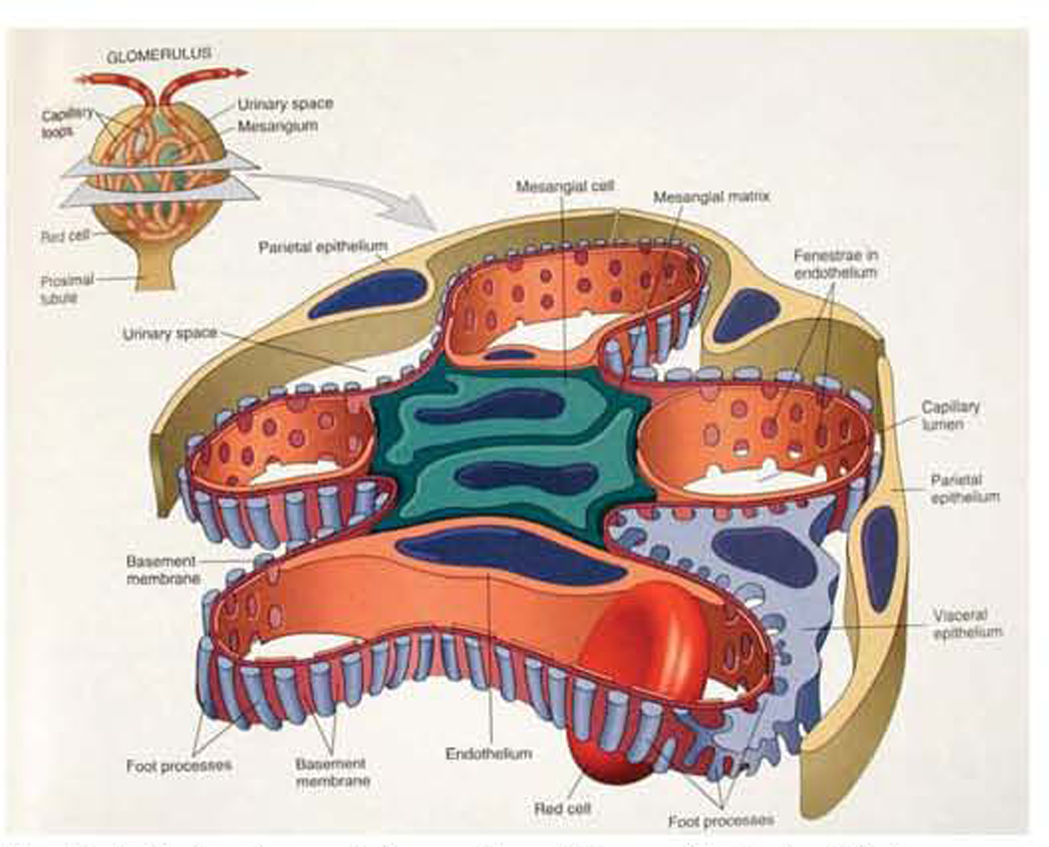
- 3-D structure of glomerulus: ‘Vinay, this is terrible’
My partnership with Drs Robbins and Cotran was sustained for 23 years. Together we worked on five editions of Basic Pathology (3rd to 7th) and four editions of Pathologic Basis of Disease (3rd to 6th). It ended sadly by the premature death of Dr Cotran in 2000 and retirement of Dr Robbins in the same year (Fig. 8). I believe our partnership was ‘made in heaven’ because it was based on relentless pursuit of excellence, humility and mutual respect. Although I was the juniormost, my opinion counted as much as the opinion of the seniors. We could criticise each other freely without hurting each other’s feelings and remaining friends. This approach has contributed to the excellence of Robbins’ books.

- Robbins–Cotran–Kumar: A 23-year partnership, made in heaven
With the passing of Dr Cotran (2000) and Dr Robbins (2003), the burden of senior editor/author fell on my shoulders. The seventh edition of Pathologic Basis of Disease was staring at me. In addition, I had just assumed the chairmanship of the pathology department at University of Chicago. Fortunately, I was able to recruit two of the finest academics in the world. Dr Abul Abbas, chairman of pathology at University of California San Francisco, a world-famous immunologist, a superb teacher, and author of two books on immunology. Like me, he hailed from the AIIMS, New Delhi. The other, Dr Nelson Fausto, was an excellent liver pathologist and chairman of pathology at University of Washington in Seattle. We maintained the same relationship that Drs Robbins, Cotran and I had developed. Together, the three of us edited the seventh edition (2005) and by all accounts sustained the excellence of Pathologic Basis of Disease. We added Dr Jon Aster from Harvard in the eighth edition (2009). The three of us (Kumar, Abbas and Aster) have remained editors for the ninth (2014) and tenth editions (2020) and are in the process of working on the eleventh edition (due 2025). They also joined me as editors of Basic Pathology of which the eleventh edition was published in December 2022. Given the advances in educational technology and increasing use of smartphones and tablets, we published a new all-digital book Robbins Essential Pathology in late 2020 and are planning to revise it in 2023.
Over the years the books have evolved, and in some cases quite significantly. The third edition of the big Robbins is the first that bears my name on the cover (1984). Comparison with the current tenth edition will show some striking changes: all illustrations are in colour, in 1984 all were black and white. Almost 300 schematics and flow charts have been added to illustrate complex pathogenetic pathways; in the third edition four (of 29) chapters were written by contributors, by contrast in the current edition, 20 have been written by subject experts reflecting the complexity of modern medicine. The total number of chapters has remained 29 but two new chapters (Chapter 1: Cell biology and Chapter 29: Ophthalmic pathology) have been added, thus requiring some chapters to be combined. We take great pains not to make the books too ‘obese’, which means that added content must be balanced by removal of old and unnecessary content. The total number of pages has remained around 1400 (for big Robbins) and 750 (for baby Robbins). Robbins is among the few standard textbooks that has remained as a single volume, and we intend to keep it that way.
I have had the good fortune to work on Robbins’ textbooks for the past 43 years. Together I have been the author/editor of 22 editions. In recognition of my contributions, the publisher has decided that my name will be part of the book titles— Robbins and Kumar Basic Pathology and Robbins Cotran and Kumar Pathologic Basis of Disease. It is no less than the Nobel Prize for me.




